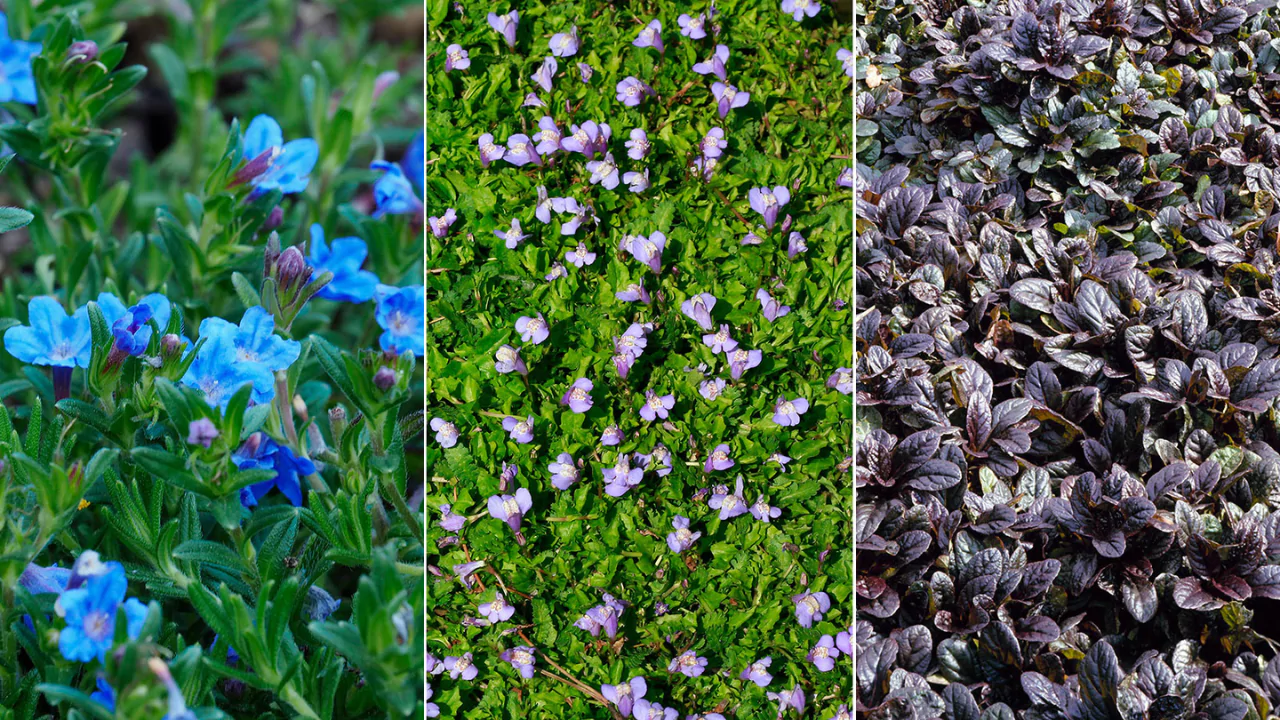
When you think about groundcovers for your yard, ask yourself: can I walk on it? By choosing the right plants, you can add color and character that really catches the eye. Swap out ordinary grass and test-drive these walkable groundcovers in your lawn and garden beds.
A neat, closely-mown lawn with few weeds is plenty respectable. Still, a lawn so carefully tended that every blade glints in the sun is becoming hard to find. Replace that familiar green carpet with something showier, and your yard will be impossible to overlook.
GLawns are losing ground to grassless designs, and the market agrees. Alternative blankets of foliage offer richer texture, brighter hues, and let you retire the mower for good. Suddenly, weekly trimming feels less like duty and more like history.
Groundcovers hug the ground, spreading outward instead of shooting skyward. Listed here are a few favorites below. These tough little steppables show more color than turf, need less fuss, and some even add a pleasant fragrance when you brush past.
The choices can feel endless, yet this brief selection keeps things simple. Slip off your shoes and sink your feet in.
Sedum
Sedum is remarkably resilient, handling light foot traffic and needing almost no special care. It thrives in full sun, tolerates heat, and conserves water, making it a smart choice for patios or driveways in warmer regions.
The genus offers a wide menu of forms, yet low-growing varieties work best as living carpets. For hardiness zones 3 through 9, consider Blue Spruce, Dragons Blood, Tricolor, Fuldaglut, or Kamtschaticum. Most send up summer blooms that cheer the garden while inviting bees and other pollinators.
Creeping Jenny
Creeping Jenny wears a quilt of chartreuse leaves that resemble scattered coins, hence its nickname moneywort. It prefers sunny spots but will settle for light shade, endures some foot traffic, and asks only occasional moisture-nothing more.
In spring, small yellow blossoms pop up and summon bees and birds alike, adding a splash of color. This tough perennial grows happily in hardiness zones 3 through 8, even in places where soil is only moderately rich.
Thyme
Not every type of thyme suits life as a groundcover, yet the hardy ones create a stunning, fragrant carpet that basks in sun and asks for almost no attention. Mother-of-thyme, woolly thyme, and creeping thyme thrive in zones 5 through 9 and reward cooks with fresh sprigs that season countless dishes.
Soapwort
Soapwort earned its name because the leaves, when rubbed with water, form a surprisingly effective lather. This adaptable perennial blankets areas from zone 3 to zone 9, spreading steadily and sending up cheerful pink, red, or white blooms each spring.
Mazus
If you want a thick, glossy green mat dotted with orchid-like lavender flowers, mazus is the go-to choice for zones 5 through 8. Just keep it out of busy paths, since it tolerates only gentle foot traffic before showing signs of wear.
Corsican Mint
Corsican mint favors a little shade during hot spells but otherwise loves sunny spots. Step softly and its powerful scent bursts into the air, turning a simple stroll into an aromatic experience that lingers long after.
Zones 6 through 9 provide an excellent environment for Corsican mint. Its blooms are so small that only a careful look reveals them, yet the plant still sends out pale lilac flowers by late summer. Corsican mint does need a little upkeep and light watering whenever rain stays away for too long.
Creeping Phlox
Creeping phlox offers needlelike leaves that stay green all year in zones 4 through 8, but early spring is when the whole mat bursts into blue, purple, rose, white, or bicolor flowers. The plant loves full sun and well-drained soil, and its sturdy stems can even tolerate gentle foot traffic.
Snow-in-Summer
Throughout summer, white flowers rise above silvery-gray leaves, creating a striking display that catches nearly every passerby. Because it craves excellent drainage, Snow-in-summer fits right at home on slopes, in cracks, or within a rocky garden.
Gardeners should still be vigilant: a light trim after bloom stops the plant from spreading too aggressively. Overall, the species thrives in cooler climates, doing best in hardiness zones 3 through 7.
Scotch Moss
At first glance, scotch moss looks too delicate to handle regular foot traffic, yet it behaves more like memory foam than many gardeners expect. Press it down with a shoe, and moments later the stems spring back to their original position. Happy in U.S. hardiness zones 4 through 8, the plant craves steady moisture during the hot summer stretch and rewards patience each spring with a scattering of tiny white flowers.
Portulaca
The flowers of portulaca arrive in a cheerful mix of oranges, pinks, yellows, and whites. Its fleshy, needlelike leaves similarly bounce back after light foot traffic. Best suited to warmer zones 9 through 11, portulaca creates a dazzling carpet that blooms all summer long.
A little pruning is required if you choose portulaca as a groundcover, yet once you see the flowers spread across the soil, you will agree the extra work is worthwhile. Many groundcovers tolerate at least some traffic, but not all can withstand the heavy shoes and paws that compress the leaves day in and day out-even resilient grass eventually gives way under persistent pressure.
Examine your yard and identify the paths and play spots where people, pets, and children pass most often. To protect those hotspots, consider laying a few stepping stones [ ] that redirect the pressure away from the plants and add visual interest at the same time. Keep in mind, though, that the groundcovers listed in this guide are hardy enough to survive the occasional step, so stones are helpful but not absolutely essential.